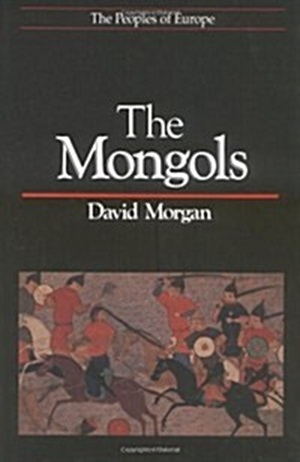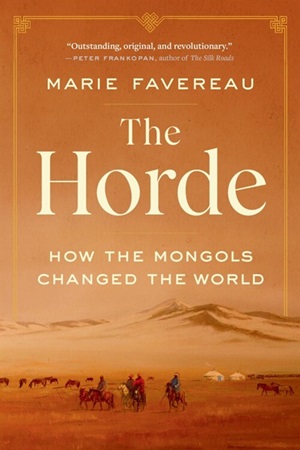김위영 고전연구가(사진), B2B 산업번역 ㈜크리덴셜(https://credloc.com/ko/) 대표이사

종전의 전통적인 관점에서 몽골 제국은 무자비한 공격과 적을 도륙을 하는 잔인한 정복제국이었다. 모든 주변의 적에 대한 군사적 우위를 점하고 계속된 팽창과 약탈을 거듭한 점 등을 그 근거로 들 수 있다. 고대 사회는 전쟁에서 패배한 국가의 국민이 노예로 전락하는 것이 대부분이었다. 그러나 몽골은 패배한 자를 복종하면 받아주는 패배의 관용을 베풀어 몽골의 군인으로 삼았다.
1203년 칭기즈칸이 발주나 맹약(Baljuna Covenant)를 할 때 참가한 19명 중에서 칭기즈칸과 친동생 카사르 단 이외는 모두가 다른 부족이고 심지어 적대관계인 메르키트, 케레이트 부족원도 있었다. 이들 중에는 이슬람교도, 기독교도, 불교도, 샤머니즘 등 다양한 종교를 믿는 자들도 있었다. 이처럼 몽골 군대는 몽골인의 군대가 아니라 모든 나라의 군대가 참여한 연합군의 세계적 군대였다. 몽골의 위대한 점은 친족, 인종, 종교를 떠나 능력을 중심으로 하며 통합정신에 입각한 관용 사회로 나아가는, 하나로 대동단결 하는 공동체 제국의 기본적 틀을 제공한 것이다. 명문화되지는 않았지만 개방성과 다양성을 존중하되 법 앞에 평등하다는 모토를 가졌던 것이다.
유럽의 프란체스코 수도사 기욤 드 뤼브룩(Guillaume de Rubrouck, 1220년~ 1293년)가 1254~55년간 몽골을 여행하며 몽케 칸이 다스리던 몽골의 수도 카라코롬에서 모든 종교가 평화롭게 공존하는 평화의 땅으로 기독교도, 무슬림, 불교도, 정령 숭배자. 무당(주술사)등이 종교적 탄압이 존재하지 않고 있으며 다양한 인종과 종교, 언어를 가진 소규모 집단들이 모여 하나의 법 아래서 평화롭게 공존하는 사실을 밝히고 있다. 몽골제국에 살은 서방 사람들의 출신 내력을 보면, 이탈리아인, 프랑스 및 플레밍(오늘날 네델란드 및 벨기에)인, 그리스인, 독일인, 스칸디나비아인, 러시아인, 헝가리인, 알란인, 아르메니아인, 조지아인, 이라크 및 시리아의 네스토리교인, 아랍인, 페르시아인 등이었다.
몽골의 역참제도는 수도 카라코룸에서 헝가리까지 8,000km를 파발꾼이 일 주일 안에 도착하는 훌륭한 조직체계였다. 개방적으로 빠르게 동서양의 통신, 물류, 정보, 사상을 전달했다. 서아시아의 천문학, 역법, 수학, 지도학 등이 동아시아에 소개되고, 중국의 인쇄술, 화약, 화기, 나침판 등 첨단기술이 아랍과 유럽에 전파되었다. 고려의 종이가 이스람에서 사용되었고 이슬람 강철이 중국에 사용된 것이다. 유럽에 전달된 화약이 변방에 있던 낙후된 유럽을 세계의 중심지로 변모시킨 원동력이 되었다. 이처럼 몽골의 지배는 근대 세계 시스템의 토대가 되었다. 결론적으로 세계 역사상 가장 넓은 영토를 다스렸던 몽골 제국은 세계인과 종교, 사상, 물류가 공존하고 상호 간에 관용하는 세계화의 시작이었다. 몽골이 남긴 위대한 유산은 아직도 세계 전역에서 영향을 미치고 있기에 몽골에 대해 배워야 할 이유와 필요성이 있다고 생각된다..
◆ The Mongols(몽골족, 1986)

David Morgan(데이비드 몰간, 1945~ 2019)은 위스콘신-매디슨 대학교(University of Wisconsin-Madison) 역사 명예 교수였던 영국의 역사가로 몽골사의 전문가였다.
The Mongols are not very prbviously a ‘people of Europe’. But they have significantly influenced the history of Europe. Their empire was so huge that although its centre was in the Far East, it constituted for a century or more Europe’s more formidable and dangerous eastern neighbor. Its influence on Europe, from the point of view of politics, commerce or religion, was considerable, though nothing approaching what it would have been had the Mongol armies not withdrawn from central Europe in 1242. --P. 1
몽골족은 분명히 ‘유럽의 민족’이 아니다. 그러나 그들은 유럽 역사에 상당한 영향을 끼쳤다. 몽골 제국은 너무나 거대하여 그 중심이 극동에 있었음에도, 한 세기 이상 유럽에게 가장 무섭고 위험한 동방의 이웃이었다. 몽골군이 1242년 중부 유럽에서 철수하지 않았을 때 벌어질 일에는 미치지 못했겠지만, 정치와 상업 및 종교의 측면에서 유럽에 끼친 몽골의 영향은 상당했다.
Mongols learned to ride very young indeed; and a Mongol who could ride was a potential soldier. All male Mongol adults below the age of 60 were liable for military service. There was no such thing as a civilian. Juwayni says that the Mongol army ‘is a peasantry in the dress of an army, of which, in time of need, all, from small to great, from those of high rank to those of low estate, are swordsmen, archers or spearmen’. --P.85
몽골족은 사실 아주 어릴 때부터 말 타는 것을 배웠다. 말을 탈 줄 아는 몽골족은 잠재적인 병사였다. 60세 이하의 몽골족 성인 남성은 모두 병역의 의무가 있었다. 민간인 같은 것은 존재하지 않았다. 페르시아의 역사가인 주베이니는 몽골군이 “군복을 입은 농민으로서, 필요할 때는 작은 사람에서 큰 사람, 고위층의 사람부터 재산이 거의 없는 사람에 이르기까지 모두 검수, 궁수, 창병(槍兵)이 된다”고 말했다.
The best-known fact about the Mongols’ military administration is that they organized their forces according to a decimal system, with units of 10, 100, 1000 and 10,000. Of these the tumen of 10,000 was the major fighting unit, but the individual Mongol trooper would probably identify most readily with his thousand. --P. 88
몽골족이 군사행정에 관해 가장 잘 알려진 사실은 그들의 십진법 체계에 따라 10명, 100명, 1000명, 1만 명 단위에 따라 군대를 조직했다는 점이다. 이 중에서 1만 명으로 구성된 ‘투멘<tumen, 만호(萬戶)>’ 이 가장 주요한 전투 단위였지만, 개별 몽골족 기병은 아마도 1000명 단위의 부대에 가장 쉽게 일체화되었다.
When Christopher Columbus set sail from Spain in 1492 he was heading for Cathay, the land of the Great Khan. His copy of the 1485 edition of Marco Polo’s travels is still extant in Seville, and his proposals for his voyage were based partly on miscalculations founded upon his reading of Marco. --P.198
크리스토퍼 콜럼버스는 1492년에 스페인에서 출항했을 때, 대칸의 땅 ‘캐세이’를 향하고 있었다. 콜럼버스가 소유한 마르코 폴로의 <동방견문록> 1485년판 사본은 아직도 세비야에 현존하고 있으며, 그의 항해 계획은 부분적으로 그가 마르코 폴로의 여행기를 읽고 잘못 판단한 오산에 근거했다.
◆ The Mongol Empire(몽골 제국사, 2017)

미국의 몽골제국 전문가인 Timothy May 교수는 본서를 통해 1260년 몽골 제국의 해체부터 각 국가가 끝날 때까지 후계 국가인, 일칸국, 차가타이 칸국, 황금 호드(킵차크), 오고타이 칸국, 원 제국에 대한 상세한 안내를 하고 있다.
The minqan was then also organized decimally so that it comprised ten units of one hundred. The latter consisted of ten units of ten. This formation existed not only for the military, but also the households, so that one thousand household formed a minqan, which was taxed accordingly. Essentially, a military-industrial complex evolved, with a household minqan supporting a military minqan. --P. 39
그래서 민칸(천 단위)도 십진법으로 조직되어 100 단위의 10개로로 구성되었다. 후자는 10개의 10 단위로 구성되었다. 이러한 조직은 군대뿐만 아니라 가구에도 존재하여 천 가구가 민칸을 형성하고 이에 따라 세금이 부과되었다. 본질적으로 군산복합체는 가정 민칸이 군 민칸을 지원하면서 발전했다.
Although Chinggis Khan was dead, he had left a considerable legacy. The most important elements of this included his unification of the Mongolian plateau and the establishment of an effective state. This transformation included a social revolution that altered the fundamental tribal structure of the plateau, in which everything was inexorably linked to the altan urugh. --P 66
비록 칭기즈칸은 죽었지만 상당한 유산을 남겼다. 유산의 가장 중요한 요소에는 몽골 고원의 통일과 효과적인 국가의 설립이 포함되었다. 이러한 변화에는 모든 것이 황금 씨족(altan urugh)과 불가분하게 연결되는 고원의 근본적인 부족 구조를 바꾸는 사회 혁명이 포함되었다.
One of Ogodei’s major achievement was the establishment of a capital. It was one thing to rule from a military camp as his father had done while conquering territory; it was quite another to actually rule an empire after the conquest. His tax collectors needed a definite location to which to send tax revenue. --P. 99
오고타이의 주요 업적 중 하나는 수도의 건립이었다. 그의 아버지가 영토를 정복하면서 그랬던 것처럼 군영에서 통치하는 것은 한 가지 일이었다. 정복 이후 실제로 제국을 통치하는 것은 전혀 다른 일이었다. 그의 세금 징수원은 세금을 보낼 명확한 장소가 필요했다.
As the Mongol expansion was decreed by Heaven, anyone who refused to submit therefore was in rebellion against Heaven and merited punishment. In this sense, the Mongols were the Scourge of God. --P. 328
몽골의 확장은 하늘의 명령에 따른 것으로, 복종을 거부하는 사람은 누구나 하늘에 반역하는 것이며 처벌을 받아야 한다. 이런 의미에서 몽골인들은 신의 재앙이었다.
In the post-dissolution empire, five states emerged from a single hyper-power: the Yuan Empire, the Jochid Khanate, the Ilkhanate, the Ogodeid Khanate and the Changhatayid Khanate. --P. 336
해체된 이후의 제국에는 5개의 국가가 단일 초강대국에서 출현했다. 즉, 원 제국, 주치 칸국, 일칸국, 오고타이 칸국, 차가타이 칸국이다.
In his Jamiat al-Tawarikh, Rashid al-Din recorded an aphorism of Chinggis Khan’s. It proved prophetic: ‘Among my offspring, many emperors will come into existence after this. If the grandees and warriors who serve them do not maintain the yasaq strictly, the empire will become shaky and end.’ --P.351
집사(集史)에서 라시드 알딘은 칭기즈칸의 격언을 기록했다. 이는 예언적으로 입증되었다. “ 나의 자손 중에서 이후에 많은 황제가 출현할 것이다. 그들을 섬기는 귀족과 전사들이 법전인 야사를 엄격히 유지하지 않으면 제국은 흔들리고 멸망할 것이다.”
◆ The Mongol storm(몽골의 폭풍, 2020)

미국 Nottingham Trent University(노팅엄 트렌트 대학)의 중동사 교수인 Nicolas Morton(니콜라스 모튼, 1980~ )는 몽골의 세계지배가 주변국에 미친 영향을 분석하고 있다.
The Mongols brought their herds and flocks with them on campaign, thereby supplying themselves with a ready source of food. Thus, they did not typically need supply lines, and their fast-moving cavalry exceptionally well-suited to harassing those of their opponents. --P. 20
몽골인들은 원정에 소 떼와 양 떼를 데리고 왔고, 이로써 군량미를 스스로 공급했다. 따라서 그들은 일반적으로 보급선이 필요하지 않았으며 빠르게 움직이는 기병은 적군을 괴롭히는 데 매우 적합했다.
The Great Khan Ogodei also took steps to improve the management of the empire, so in 1235 he founded an imperial capital at Qaraqorum in the Orkhon valley(present-day Mongolia). This was a location of great symbolic significance, being the valley where several former steppe empires had established their capitals. --P. 70
오고타이 대칸은 역시 제국 경영을 개선하기 위한 조치를 취해서 1235년 오르콘 계곡(현재의 몽골)에 있는 카라코룸에 제국 수도를 세웠다. 이곳은 여러 이전 대초원 제국이 수도를 세웠던 계곡이라는 점에서 상징적으로 매우 중요한 위치였다.
Consequently, whether by conquest or submission, many Near Eastern territories submitted to the Mongols during the mid-1240s. This then had the effect of isolating the remaining powers that continued to assert their independence. By this stage, every remaining power now had to confront the cold reality of Mongol overthrow. --P. 107
결과적으로, 정복이거나 항복이든 간에 많은 근동 지역이 1240년대 중반에 몽골에 항복했다. 이는 이후 계속해서 독립을 주장하는 나머지 세력을 고립시키는 효과를 가져왔다. 이 단계에서 남은 모든 세력은 이제 몽골의 전복이라는 냉혹한 현실에 직면해야 했다.
One of the most striking manifestations of this worldview was the Mongols’ willingness to treat all the religious communities under their control on an equal footing. This was not religious tolerance for toleration’s sake; rather, it was the product of their own spiritual beliefs. --P.146
이런 세계관에서 가장 두드러진 표현의 하나는 자신이 통제하는 모든 종교 공동체를 동등한 입장에서 대우하려는 몽골의 의지였다. 이것은 관용을 위한 종교적 관용이 아니었다. 오히려 그들 자신의 영적 신념의 산물이었다.
Moreover, the Mongols’ two attempts to invade Japan in 1274 and 1281 both ended in failure, on the latter occasion because a typhoon described as a “divine wind“-Kamikaze—destroyed the Mongol fleet. --P. 253
더욱이 1274년과 1281년에 일본을 침공하려는 몽골의 두 번의 시도는 모두 실패로 끝났는데, 후자의 경우에는 "신의 바람"으로 묘사되는 태풍인 카미카제((神風)가 몽골 함대를 파괴했기 때문이었다.
The Mongols also influenced the future development of the Eurasian continent through the dissemination of technologies. The creation of such a vast empire enabled new technologies, devices, and ideas to cross enormous distance. This process can be seen at work in many forms, but there is one specific development that warrants particular attention. This regards a technology first developed hundreds of years before in China and whose diffusion into the Near East and elsewhere would change the face of global human civilisation: gunpower. --P.317
몽골족은 또한 기술의 전파를 통해 유라시아 대륙의 미래 발전에 영향을 미쳤다. 이러한 광대한 제국의 탄생은 새로운 기술, 장치, 생각이 엄청난 거리를 넘을 수 있게 해주었다. 이런 과정은 다양한 형태로 작동하지만 특별한 주의가 필요한 하나의 특정한 개발이 있다. 이는 수백 년 전에 중국에서 처음 개발된 기술과 근동 및 기타 지역으로의 확산이 전 세계 인류 문명의 면모를 변화시켰다. 즉 화약이다.
◆ The Horde(킵차크 칸국 호르드, 2022)

파리 낭테르 대학교 역사학자 Marie Favereau(마리 파브로, 1977~)교수는 오늘날 러시아 전역을 다스렸던 칭기스 칸의 첫 아들 주치가 건국한 금장칸국(金帳汗國)인 말 위의 거대한 유목 제국 킵차크 칸국의 역사를 발굴한 신작을 저술했다.
The Jochid pioneers maintained Mongol practices but would never go back Mongolia. In less than three decades, a few thousand people became hundreds of thousands, creating a sophisticated social organization able to sustain their own imperial formation. This multitude recognized itself as ulus jochid and referred to their empire as Orda - the Horde. --P 2
주치 제국의 개척자들은 몽골의 관습을 유지했지만 결코 몽골리아로 돌아가지 않았다. 30년이 되지 않아 수천 명의 사람이 수십만 명이 되었고 그들 자신의 제국 형태를 유지하는 복잡한 사회 조직이 탄생했다. 이 집단은 스스로를 주치 울루스라고 인식했고 자신들의 제국을 오르다, 즉 호르드라고 불렀다.
If the Horde were projected on today's maps, it would stretch across a region occupied by Ukraine, Bulgaria, Moldavis, Azerbaijan, Georgia, Kazakhastan, Uzbekistan, Turkmenistan, and Russia, including Tatarstan and Crimea. The history of the Horde is therefore a shared legacy. --P 13
만약 오늘날의 지도에 호르드를 나타낸다면 우크라이나, 불가리아, 몰다비아, 아르제바이잔, 조지아, 카자흐스탄, 우즈베키스탄, 투르크메니스탄, 그리고 타타르스탄과 크림반도를 포함하여 러시아가 차지한 지역에 걸쳐 있을 것이다. 그러므로 호르드의 역사는 공유된 유산이다.
Mongol strategy was effective in part because it paired large-scale military operations with pastoral economics, combat acumen with effective resource management. In all their military campaigns, including the Westward operations, warriors brought along their families, tents, baggage, and herds. Servants, workers, herders, women, and children all took an active part in daily logistics and made the final conquest of the Qipchaq steppe possible. --P 94
몽골의 전술은 부분적으로 대규모 군사작전과 목축 경제, 전투 통찰력과 효율적인 자원 관리가 짝을 지었기 때문에 효과적이었다. 서부 작전을 포함하여 모든 몽골의 군사 원정에 병사들이 가족, 천막, 짐, 가축들을 함께 데리고 다녔다. 노예, 일꾼, 목동, 여성, 아이들은 모두 일상적인 병참에 적극적으로 참여하여 킵차크 초원을 최종 정복할 수 있었다.
The flexibility built into those institutions was on full display as Mongke-Temur balanced power among rivals within the empire, imposed Mongol-style law and order on sedentary subjects with unfamiliar political cultures and ethnic traditions, and fostered a trade network that knit together Central and Eastern Europe, the Mediterranean, Siberia, and the Black Sea. This was truly the Mongol exchange. --P. 164
몽케 테무르가 제국 내의 경쟁자들 사이에서 권력의 균형을 유지하고, 생소한 정치문화와 민족적 전통을 지닌 정주 신민들에게 몽골 방식의 법과 질서를 강요하고, 유럽 중앙 및 동부, 지중해, 시베리아, 흑해를 서로 연결하는 무역망을 육성하면서 이러한 몽골의 제도에 구축한 유연성이 완전히 드러났다. 이것이 진정한 몽골의 교환이었다.
It is true that the fifteenth century saw the end of something important: Mongol domination. But the steppe tradition outlived the conquerors who called upon it. The commercial infrastructure of the Mongol exchange also outlasted its creators, a patrimony that preserved trade between east and west and enabled the continuing dissemination of ideas and narratives across Eurasia. --P. 298
15세기에 몽골의 지배라는 중요한 일이 종말을 맞이한 것은 사실이다. 그러나 초원의 전통은 그것을 요청한 정복자들보다 오래 살아남았다. 또한 몽골 교환의 상업적 기반은 동서간의 무역을 보존하고 유라시아를 가로질러 생각과 이야기를 계속적으로 전파할 수 있는 유산으로 그것을 창조한 사람보다 오래 지속되었다.
What contributed first to the distinctiveness of the Horde was the location and ecology of the Jochid territories. The homeland of the Horde lay at the intersection of Asia, the Middle East, and Europe. The Jochids were a bridge between the Mongol Empire and the western frontier of Eurasian steppe. From their unique position, the Jochids attracted exchange and allegiance with Hungarians, Bulgarians, Byzantines, Italians, Germans, Russians, Mamluks, and Greeks and later Ottomans, Poles, and Lithuanians. --P 306
호르드의 특수성에 가장 먼저 기여한 것은 주치 영토의 위치와 생태이다. 호르드의 고향은 아시아, 중동, 유럽이 교차하는 곳에 있었다. 주치는 몽골 제국과 유라시아 초원의 서쪽 변경 사이의 다리였다. 그들의 독특한 위치에서 주치는 헝가리, 불가리아, 비잔틴, 이탈리아, 게르만, 러시아, 맘루크, 그리스 그리고 나중에는 오스만 제국, 폴란드, 리투아니아 사람들과의 교환과 충성을 유인했다.


